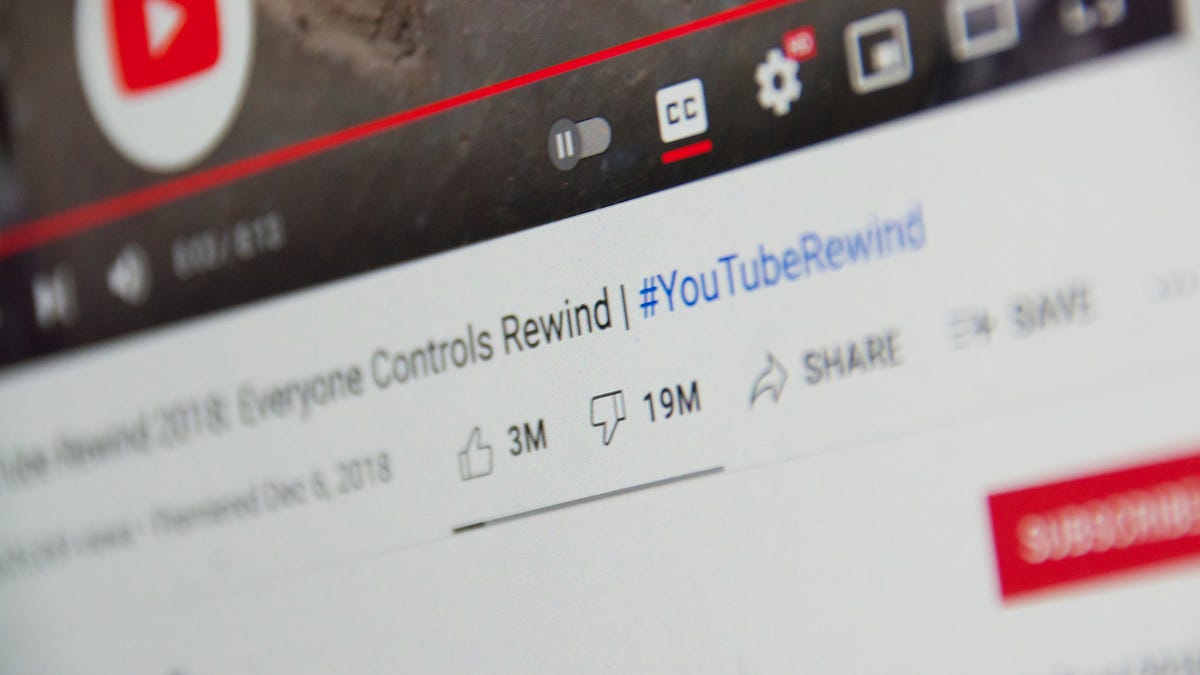YouTube to remove all public dislike counts, aiming to defang harassment mobs
The video service says "dislike attacks" -- campaigns to drive up the number of dislikes on videos -- disproportionately affect smaller channels and newer creators.

The most disliked video on YouTube is one that YouTube itself posted.
YouTube is removing public dislike counts, the visible tallies of how many people click on "thumbs down" for a video. Google's video site, the largest source of online video on the planet with more than 2 billion monthly users, said the move is designed to impede "dislike attack" harassment campaigns.
The change "will start gradually rolling out" on Wednesday, YouTube said.
The dislike button itself is staying, so viewers can still dislike videos to tune their recommendations and privately express displeasure with a video. Creators can also privately track the number of dislikes on their videos, alongside all their private metrics. But the public count of dislikes will be gone soon.
After experimenting earlier this year with changes to the dislike button, YouTube said it found that smaller creators and people just getting started are disproportionately the targets of dislike attacks.
"We heard during the experiment that some of you have used the public dislike count to help decide whether or not to watch a video. We know that you might not agree with this decision, but we believe that this is the right thing to do for the platform," YouTube said in a blog post Wednesday.
It's the latest move by a tech giant tweaking a feature, developed innocently years ago, that has evolved into a destructive force for some people. Like and dislike counts have been cited by researchers not only as tools for harassment but also as factors in how social media damages some users' mental health. Facebook and Instagram introduced the option for all users to hide public like counts earlier this year, after a test starting in 2019. The same year, Twitter explored whether to obscure likes and retweets.
On Wednesday, YouTube said the removal of dislike counts was because the company wants to improve the inclusivity, respect and safety of its service, calling it "one of many steps we are taking to continue to protect creators from harassment."
"Our work is not done, and we'll continue to invest here," the company said.
YouTube itself has the distinction of posting the most disliked video ever on YouTube. Its 2018 YouTube Rewind, an erstwhile annual trend recap video, has at nearly 221 million views -- and 19 million dislikes. Even YouTube CEO Susan Wojcicki's own children called it "cringey."
More streaming advice
- 10 Ways to Save Money on Streaming
- How to Cut the Cable TV Cord in 2023
- See More at Streaming TV Insider

